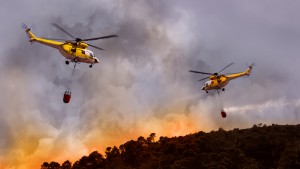Oregonians have faced several major natural disasters over the last few decades. After some of them, the State of Oregon commissioned emergency management and resiliency expert-led after-action reports to provide feedback on the events and government response.
For example, a 96-page After-Action Review was conducted on the wildland fire and wind event of September 2020, which included the Riverside Fire, the Beachie Creek Fire, the Holiday Farm Fire, and the Lionshead Fire. This review, commissioned by the Oregon Office of Emergency management, and supervised by the State Resiliency Officer and staff from the Office of the Governor, identified many of areas of success, but also a number of ways the state’s future efforts could potentially be improved, such as by restructuring parts of certain government agencies responsible for aspects of disaster recovery, and modifying the authorities certain government officials have while disaster response efforts are underway.
Over the last several years, the State Legislature has been considering whether any state laws should be changed in response to researchers’ recommendations. Representative Paul Evans (D-Monmouth), who chairs the House Special Committee on Wildfire Recovery, as well as the Joint Committee on Ways and Means Subcommittee on Public Safety, has convened a work group to develop and recommend legislation around this issue for the 2023 Legislative Session. It’s being called the Disaster Recovery Authority Work Group, and every state agency involved in disaster preparedness, disaster response, and disaster recovery is participating. Other stakeholders such as local governments are represented as well – AOC Legislative Director, Mallorie Roberts is participating on behalf of counties. The work group met for the first time in April, and will continue meeting on a monthly basis throughout the summer and early fall.
The Disaster Recovery Work Group will consider and make recommendations regarding the ideal use of governor authorities, recovery planning cell structure, the role of agency directors, interface with continuity of operations planning, a recovery command structure, regional staffing and economic recovery zones, incident command training needs, and seamless and efficient transition from response to recovery. A subgroup on local needs will consider, economic recovery councils and zones, fully-funded local liaisons for each region, and how to ensure recovery is truly locally driven and that local leaders’ needs and concerns are being met by the state and federal recovery organizations.
Contributed by: Michael Burdick | Legislative Affairs Manager
